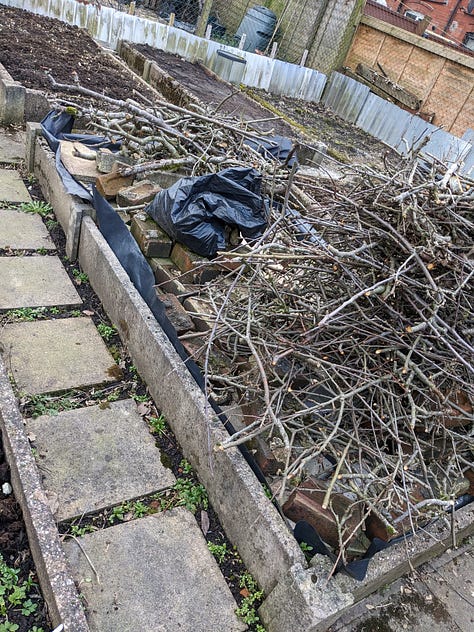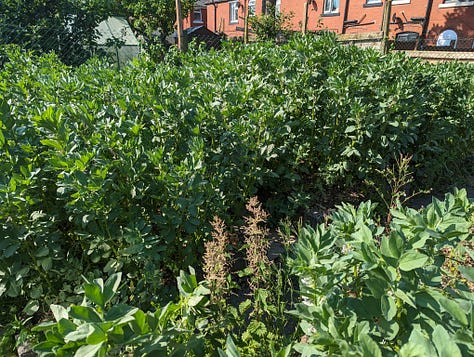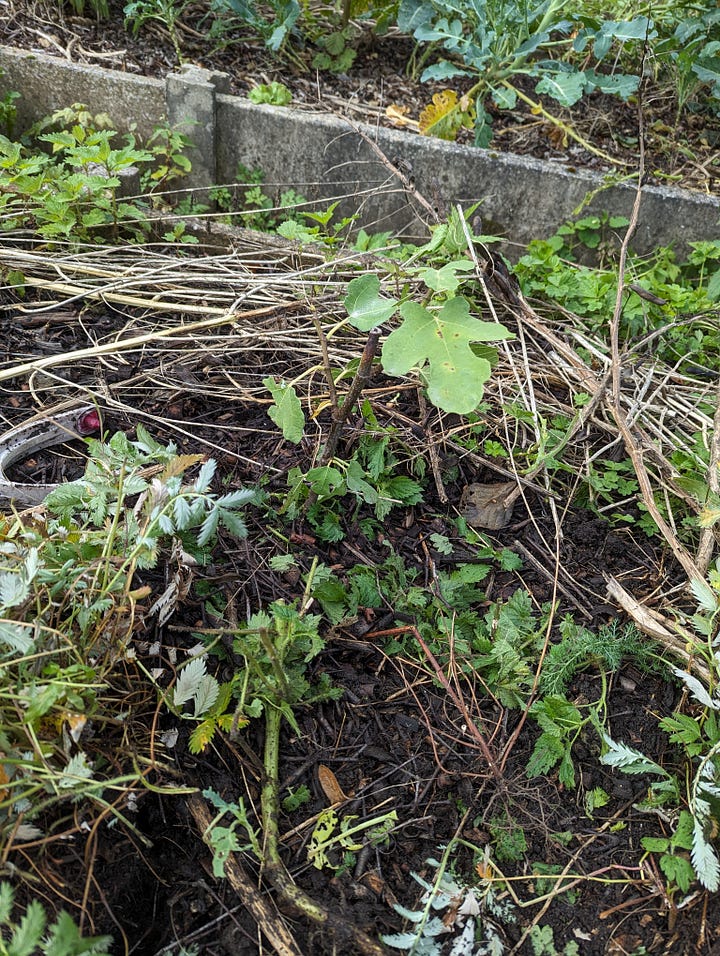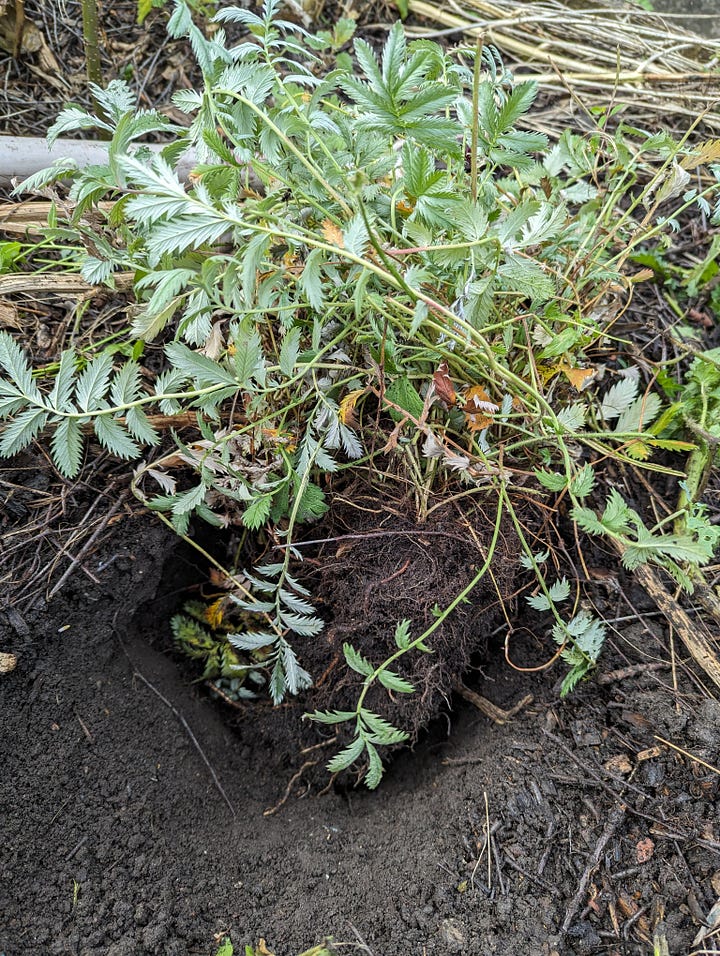For convenience, here is an index of my Silverweed related content.
Just a quick update today. I try to post once a week but I might miss next week.
Last week, I pontificated on the children of Silverweed that have been collected from very geologically diverse locations. I managed to get to allotment this weekend - it’s ten minutes car ride away so I don’t go as often as I’d like. I took over this plot early this year. When I arrived, it was well laid out but the previous owner had for some unknown reason piled junk on several of the beds



I was able to take the rubble to the local landfill and managed to sow some low maintenance crops (Jeruaslem Artichokes, Helianthus tuberosus and Field Beans, a variety Vicia faba grown mostly for green manure but perfectly edible) to kick start the soil biome. All this took place at a very slow rate. I’m only really able to go the plot twice a month, an hour or so each time.
With my most recent allotted (pun intended) time, I - as I said I would in the previous report - have planted out the F2 children. A friend inquired about the difficulty in inspecting the roots of these children. I’m interested in the children of these children, the so called F3 - the grand children of the original diverse set. I figure by this time the genetic mixing bowl has been sufficiently blended that we can start the process of inbreeding to find the first big storage root.


I feel this two-generation “pre-hybridisation” step is important because I believe it likely that Silverweed suffers from vigour issues when propagated clonally. This is important because once we have found our carrot sized storage root, it will be sent out into the world as a crop and will obviously be allowed to clone - it is in Silverweed’s nature to do this anyway.
Why do I believe that Silverweed suffers from vigour issues when clonally propagated? I have two thoughts on this.
One, I have a suspicion that the issues that plague other clonally propagated root vegetables will affect Silverweed. Examples of this include potatoes and potato onions.
In the case of the potato, commercially available cultivars tend to be very reluctant to flower. I believe this is from genetic bottle necking and cumulative genetic damage, but please visit the relevant website and podcast for more information. In the case of the potato onion (not a potato at all, but a type of onion), it is well known that the heirlooms are very reluctant to flower and also suffer from vigour issues. I’ve heard that there is some accumulation of disease in the onion bulbs that affects the vigour, but if anyone knows the mechanism, please comment below.
Therefore, extrapolating to clonally propagated Silverweed, there’s a chance that at least one of these vigour decreasing mechanisms will come into play.
Two, I have talked a few times about the poor summer this year affecting formation of flowers on the Silverweed specimens. But now I wonder whether the specimens I have are already suffering from some vigour decreasing mechanism.
There are likely lots of factors affecting whether a Silverweed plant will propagate with its stolons or by producing seed. If sunlight affects the likelihood of plant formation (and I think it does - anecdotally, a sunny Lakeside Silverweed patch is covered in yellow flowers, whereas a shady damp path is just leaf), it’s possible that there are wild patches of Silverweed that have essentially cloned themselves for years and years. Any mechanisms that affect the Silverweed vigour will affect all the clones. Maybe I’ve got some of these forever-cloned plants as parents.
I think this is an interesting theory. Another notch in this theory is any seed production from a hybridisation event effectively “resets” the behaviour of the children (at least for potatoes and potato onions). We certainly observe extreme vigour in these Silverweed children.

In any case, next year I’m hoping to collect a lot of seeds from these children. I’ll be looking for volunteers online for growing out these seeds in pots. The volunteers will be asked to inspect the roots of these children for any that are unusually large. We can decide on a strategy for the grandchildren later on, but there will likely be a mixture of controlled crossing between the grandchildren with promising traits to get to our desired “large root” trait as fast as possible.
Until next time.




I like that you planted J chokes and beans! They are so nice for the soil and produce a nice biomass that breaks down much faster than other things like unshredded mulch or all those branches hehe. I Also believe in the hybridizing before selection. IMHO it helps express genetic variability even within each variety that was recessive or dormant, allowing for more traits to pick from then for breeding. Very nice! I like the idea of forever clonesd plants and let my sheep's sorrel do this but also select seed from some of the plants in sunny sports that have nice traits (as you mentioned some plants produce much more seed with sun) and add it to the mostly leafy producing self cloning type, which is where I also harvest most as it doesn't go to seed much anyhow with the shade. This adds more genetic variability to the clones for later breeding :)